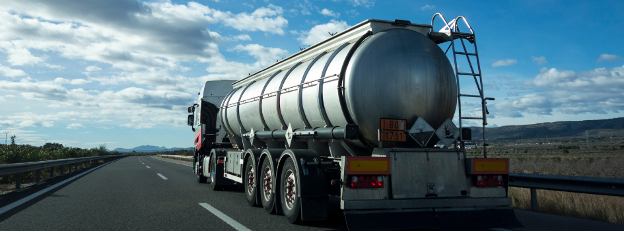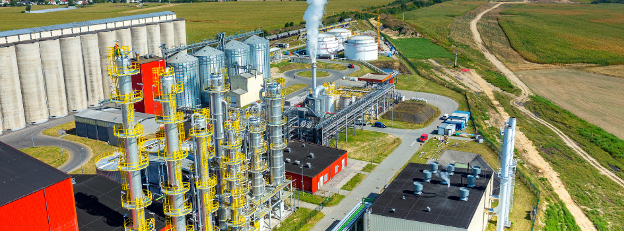
Biofuel Loading and Unloading Best Practices
As the global shift toward sustainable energy continues, biofuels have emerged as a crucial component in the pursuit of environmentally friendly alternatives. Consequently, efficient loading and unloading of biofuels play a pivotal role in ensuring a seamless and environmentally responsible supply chain.
Benefits of Biofuels
As an eco-friendly alternative to traditional fossil fuels, biofuels contribute to reducing carbon emissions and mitigating the environmental impact of industrial operations. Their importance lies in offering a renewable energy source derived from organic materials — such as crops or waste — thereby diminishing dependence on finite fossil fuel resources.
This transition to biofuels not only fosters a cleaner and greener industrial sector but also contributes to meeting regulatory requirements and achieving long-term corporate sustainability goals.
Biofuel Loading and Unloading
Biofuel loading and unloading services encompass the processes involved in efficiently transferring biofuels between transportation vessels, storage tanks, and distribution facilities.
These services are critical components of the biofuel supply chain and require specialized equipment and expertise to ensure safety, environmental compliance, and the integrity of the biofuel product.
Biofuel Loading Process
- Storage Preparation:
- Biofuels are stored in dedicated tanks or containers at the production or storage facility. These storage units are designed to maintain the integrity of the biofuels.
- Transportation Vessel Arrival:
- The designated transportation vessel, whether a tanker truck or railcar, arrives at the loading site. Proper positioning in the loading area ensures accessibility and safety.
- Connection and Grounding:
- The transportation vessel is securely connected to the loading system. Grounding measures are implemented to prevent static electricity, minimizing the risk of sparks.
- Pre-Loading Checks:
- A series of checks are conducted to ensure the vessel’s condition and the functionality of all equipment, including valves and hoses, before initiating loading.
- Biofuel Loading:
- The loading system, equipped with specialized pumps and meters, initiates the transfer of biofuels from the storage facility to the transportation vessel. Monitoring systems track flow rates and quantities to ensure accuracy.
- Quality Control:
- Quality control measures, including sampling and testing, may be employed during loading to verify that the biofuels meet specified standards.
- Safety Protocols:
- Stringent safety protocols are followed throughout the loading process to prevent spills and accidents. Personnel utilize PPE, and safety regulations are strictly adhered to.
- Documentation:
- Comprehensive documentation is maintained, recording quantities loaded, quality control results, and safety information. This documentation ensures accountability and compliance.
- Completion and Disconnect:
- Once the desired quantity of biofuels is loaded, the transportation vessel is safely disconnected from the loading system.

Biofuel Unloading Process
- Transportation Vessel Arrival:
- The loaded transportation vessel arrives at the designated truck unloading station, such as a distribution center or fuel station.
- Connection and Grounding:
- The transportation vessel is securely connected to the unloading system, and grounding measures are re-implemented to maintain safety.
- Pre-Unloading Checks:
- Checks are conducted to ensure the vessel’s condition and the functionality of all unloading equipment before initiating the process.
- Biofuel Unloading:
- The unloading system, often mirroring the loading system, transfers biofuels from the transportation vessel to the storage facility or distribution point.
- Quality Control:
- Similar to the loading process, quality control measures may be implemented during unloading to ensure the received biofuels meet specified standards.
- Safety Protocols:
- Rigorous safety protocols are followed throughout unloading to prevent spills and accidents, with personnel using appropriate PPE.
- Documentation:
- Detailed documentation is maintained during unloading, recording quantities received, quality control results, and safety information.
- Completion and Disconnect:
- Once unloading is complete, the transportation vessel is safely disconnected from the unloading system.
Required PPE
PPE is crucial to ensuring the safety of personnel involved in biofuel loading and unloading operations.
- Eye Protection: Safety glasses or goggles to protect eyes from splashes or spills.
- Hand Protection: Chemical-resistant gloves to shield hands from contact with biofuels.
- Respiratory Protection: Depending on the biofuel type and potential vapors, respiratory protection such as masks or respirators may be necessary.
- Body Protection: Coveralls or chemical-resistant suits to prevent skin exposure to biofuels.
- Foot Protection: Chemical-resistant and slip-resistant boots to protect against spills and slips.
- Head Protection: Hard hats to safeguard against potential head injuries.
Contact DXP for Cutting-Edge Biofuel Loading and Unloading Systems
DXP stands at the forefront as a premier provider of automated biofuel loading and unloading systems. Engineered with the utmost commitment to quality and safety, our systems are industry-leading. Designed for unparalleled accuracy, our custom systems are a time and cost-efficient investment, addressing your team’s loading/offloading requirements with precision and effectiveness.
Why Choose DXP?
- We offer a seamless, all-in-one experience with our in-house team of engineers.
- All our systems undergo Factory Acceptance Testing (FAT) in-house, ensuring compliance with safety, government, and industry regulations.
- Experience reduced installation and start-up time, allowing you to move product shortly after arriving on-site.
- Benefit from reduced delivery lead times, lower project costs, and improved accuracy.
Contact DXP today to learn more about our state-of-the-art solutions in biofuel loading and unloading.
